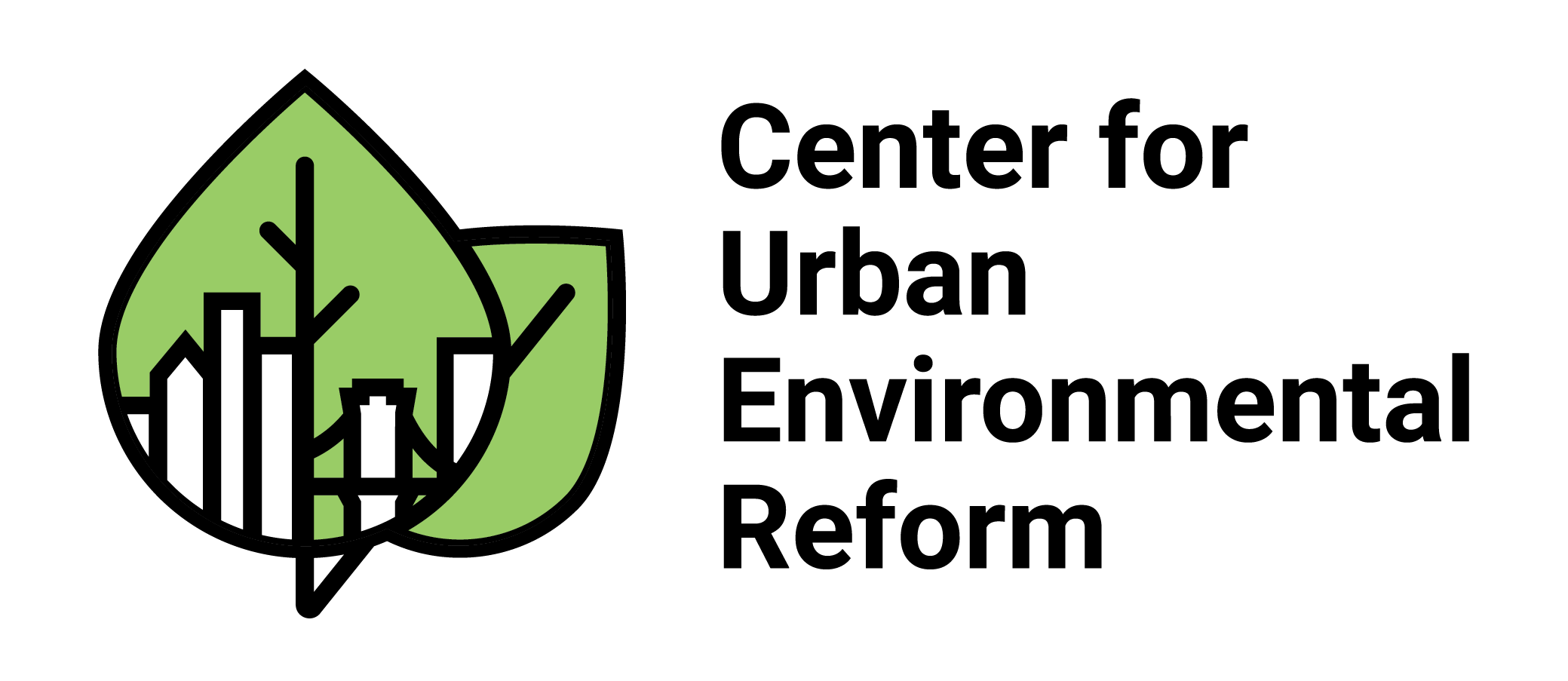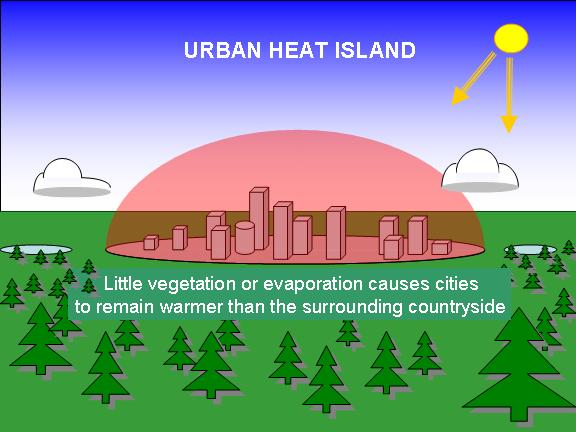A Landlocked Island

Picture Credit: Think Green Degrees Urban Heat Island Effects, Mitigation, Studies & Resources
Even though Fall is here and the climate has (generally) cooled, I looked back yesterday to a late summer NPR story about the urban heat island effect. The heat island effect is described by the Environmental Protection Agency as “built up areas that are hotter than nearby rural areas.” The EPA says that can affect communities and cities by “increasing summertime peak energy demand, air conditioning costs, air pollution and greenhouse gas emissions, heat-related illness and mortality, and water quality.” People are likely familiar with ozone alerts on especially hot days, when particulate matter is stuck in an increased level near the ground, harming the elderly, asthmatics and others with respiratory issues. The haze over cities like Los Angeles or that may be seen surrounding the New York skyline on these hot days is probably even more familiar — at least to those cities — residents, visitors and commuters.
The NPR story focused on Atlanta, but the heat island effect is a problem in all cities — some likely worse than others. Pavement and buildings stores heat; few open sources of water means less evaporation (heat is taken with water as it evaporates — cooling the ground temperature similar to how sweat cools humans); fewer trees and plants provide less shade (letting in more sunlight and, thus, heat energy) and allow for slower cooling (trees and plants remove heat by evaporating water through their leaves); air conditioning and automobile exhaust heat push the temperature higher.
However, the heat island effect can be broken and reversed. The NPR story suggests that increasing the number of plants and trees around cities is one of the best ways to see immediate effects. Trees Atlanta is a small non-profit planting trees around Atlanta, and Bette Midler’s New York Restoration Project is working with Mayor Bloomberg’s administration to implement the Million Trees NYC initiative. Green buildings and use of natural heating and cooling systems (that is, sunlight and open windows) can help, as well as using fewer cars or using mass transit. (NYC could do more with their subways — the air conditioning is blasting in the train cars during the summer months much more than is needed (and I am one who gets cold slowly), and a bystander can feel the heat radiating from the trains.) White roofs, which reflect sunlight, green roofs and rooftop gardens and farms also help.
In my opinion, the best way to mitigate the heat island effect is increasing the number of parks. When I say park, I imply the kind of park with trees, grass and fields, not simply open paved spaces for public enjoyment. The NPR story focused on a new park in Atlanta near Ponce de Leon Avenue that contains a large pond with a fountain in the middle. As water evaporates from this pond, it cools the immediate area (and, as an added bonus, helps with flood control). Fountains of all types look nice and help reduce the surrounding heat. When I went for a run one recent evening, the temperature dropped significantly as I left the Queens and Manhattan streets and entered Central Park for 10 minutes. Even running along the edge of the park felt cooler — but the temperature noticeably increased as I moved further away from it.
Not all parks can have fountains, of course, but increased green spaces increase aesthetic, recreational and environmental pleasures, in addition to neighborhood pride. My colleague Henry Tranes discussed the importance of equal access to parks in an earlier post, to which I entirely agree. Access to parks and increased green spaces is important in all types of neighborhoods and across all income variations. Creating new parks throughout cities would benefit neighborhoods and mitigate the heat island effect, as well as generally reducing carbon pollution. More urban parks would show the maxim “Think globally, act locally” in action.



Pingback: Oakley Frogskins Yahoo
Pingback: Are All Oakleys Polarized
Pingback: Nike Air Force 1 Low Deep Burgundy